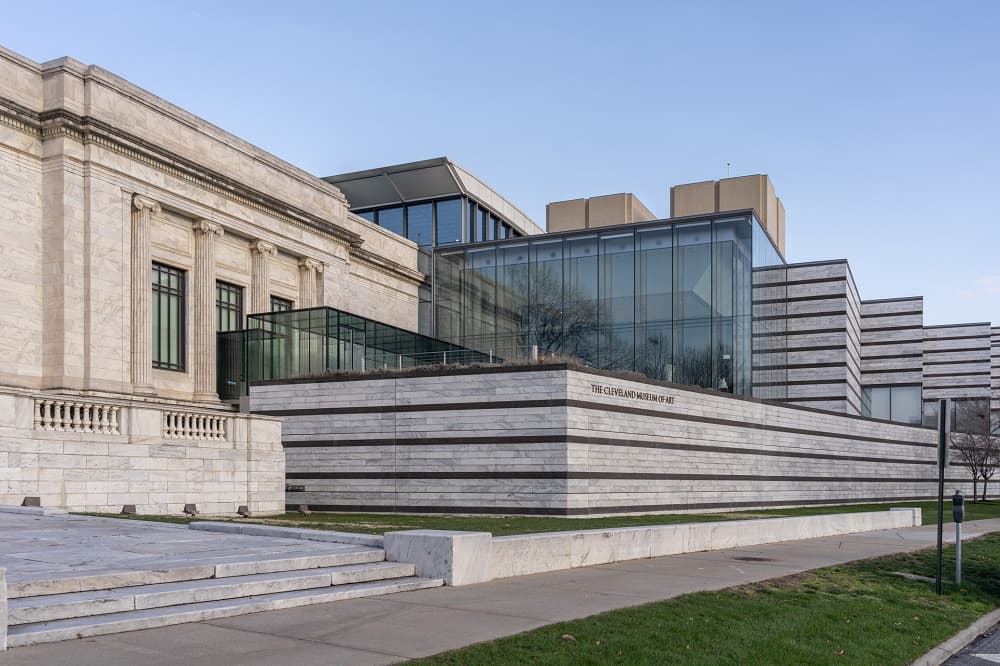
The Cleveland Museum of Art Presents Special Installation of Works by Vincent van Gogh
- Press Release

Contact the Museum's Media Relations Team:
(216) 707-2261
marketingandcommunications@clevelandart.org
The installation includes the only etching the artist created
Cleveland (September 20, 2021)—The Cleveland Museum of Art today announced that it has organized a special installation of four works by renowned artist Vincent van Gogh. On view are two paintings, both masterpieces from the last years of the artist’s life, and two works on paper, including the only etching Van Gogh created. The free installation is on view now in the Nancy F. and Joseph P. Keithley Gallery (222).
“With the public’s recent increased interest in Vincent van Gogh, we wanted to take this opportunity to showcase a selection of real masterworks by the artist,” said William M. Griswold, director of the CMA. “We look forward to welcoming our visitors to this free installation.”
Taking inspiration from the world around him, Van Gogh preferred depicting nature and capturing aspects of everyday life. Although largely unrecognized and commercially unsuccessful during his lifetime, Van Gogh gained critical recognition after his death and became the subject of popular novels and movies. Born in the Netherlands, Van Gogh decided to become an artist at the age of 27. He moved to Paris in 1886 and produced many of his mature works while living in southern France. He also suffered intermittent psychotic breakdowns and was interned at an asylum near Saint-Rémy in 1889. Perfectly lucid between attacks, he continued painting and spent three months working at Auvers-sur-Oise north of Paris before committing suicide at age 37.
Please view the press kit (opens in a new tab) for high-res images of the works on view.
The installation includes:
The Large Plane Trees (Road Menders at Saint-Rémy) is a painting inspired by nature. Van Gogh captured the yellowing leaves on fabric with a pattern of small red diamonds, visible in the picture’s many unpainted areas. After painting this composition Van Gogh used it to produce a second version in the studio known as The Road Menders at Saint-Rémy (Phillips Collection, Washington, DC). Painted on a traditional canvas covered by a ground layer, the second version is more restrained, the yellows balanced by larger areas of cool color.

The Large Plane Trees (Road Menders at Saint-Rémy), 1889. Vincent van Gogh (Dutch, 1853–1890). Oil on fabric; 73.4 x 91.8 cm. The Cleveland Museum of Art, Gift of the Hanna Fund, 1947.209
Two Poplars in the Alpilles near Saint-Rémy is an autumnal landscape revealing the full power of Van Gogh’s mature style. Trees twist and lean against a darkening sky, while the intense colors applied with charged brushstrokes convey his emotional reaction to the subject.

Two Poplars in the Alpilles near Saint-Rémy, 1889. Vincent van Gogh (Dutch, 1853–1890). Oil on fabric; 61.6 x 45.7 cm. The Cleveland Museum of Art, Bequest of Leonard C. Hanna Jr., 1958.32
Dr. Gachet is the only etching the artist created. The artist placed himself under the care of Dr. Gachet in Auvers-sur-Oise, a small village on the northern outskirts of Paris, at the recommendation of fellow artist Camille Pissarro. The doctor was himself an amateur printmaker and gave Van Gogh a varnished copper plate, helping him to print it on his own small hand press. For his first attempt, Van Gogh depicted Gachet seated in his garden smoking a pipe.

Dr. Gachet, 1890. Vincent van Gogh (Dutch, 1853–1890). Etching and drypoint, enhanced with black ink on laid paper; 18.1 x 15.2 cm. The Cleveland Museum of Art, Dudley P. Allen Fund, 1948.303
Landscape with Wheelbarrow is an early watercolor the artist created while living in Drenthe, a village in northeastern Netherlands without modern industry. Van Gogh described the barren terrain as beautiful and serene. Created with a limited palette of green and blue, Van Gogh portrayed one of the region’s open fields illuminated by the lilac hues of the evening sky. Working with the medium, he experimented with the visible brushstrokes that would later characterize his oil paintings.
